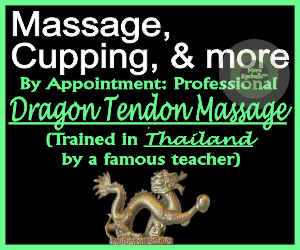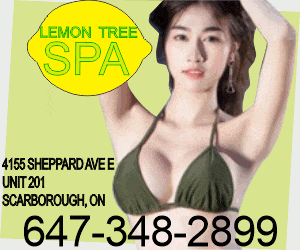M
Massage News
Guest
A good massage will resonate deep within one’s body, relaxing or stimulating the muscles on a soothing, therapeutic level. At Spa Pure Waikiki, owner Dennis Miller takes care to make sure his massages go above and beyond for clients, as standout experiences that keep guests coming back again and again. And his attention to detail, long history of expertise in the field and affinity for special touches—Spa Pure Waikiki is known for unique add-on services that include hot stone treatments and ocean massages—have gotten clients raving.
“One person said something interesting: ‘Why is that so much better than other massages? Is it because you just work so much harder?’” remembers Miller. The answer is a little more complicated:

It’s a custom experience
Everyone has different goals, clients included. How someone is comfortable being touched or what areas on their bodies they want extra care changes from person to person—and a massage should reflect that.
The first step? Communication. There should be an open dialogue between the client and the therapist beforehand to better understand the client’s expectations and goals. By adjusting the amount of effort and time spent on problem areas that target a client’s key concern (tight shoulders, for instance, or an aching lower back), the guest will feel that much more cared for and listened to. And nonverbal cues can communicate even more about a client’s preferences than they may be able to articulate. How they react to an area or a level of pressure can help a therapist tailor the experience to their specific client.

Relaxation comes first—in every element
Massages are all about releasing tension, but what some people may not realize is that the process starts long before any muscles get touched. It starts in something as simple as the environment. For clients to feel fully at ease and mentally prepared to let go of their stress and tightness, the therapist needs to set the tone.
First, start with eliminating any unsettling or distracting details. Loud or grating noises, chatter from the street, whirring machinery or lighting fixtures, dirty corners or less-than-spotless furniture and off-putting smells can all take clients out of the moment—and, thus, out of relaxation mode. Then, add soothing details. Think soft incense or aromatherapy scents such as lavender, meditative crystal bowl sounds, dimmed lighting or candles and always clean venues. “In a nutshell, there you go: Pay attention to the little details and customize it to each person,” says Miller.

The right first impression goes a long way
“People need to feel welcome and appreciated,” says Miller. “But they are paying for a massage.” That means a therapist needs to have the confidence and knowledge that will put clients at ease and make for the most enjoyable, effective experience. “When you walk into a temple or a church, it’s a special place and you approach it respectfully. So if the therapist approaches a client respectfully, the client feels that.” Setting a first impression that is professional, confident and assured will get clients ready to be put into the therapist’s expert hands. Then, Miller starts with a moment of stillness, to focus one’s energy, followed by a gentle touch to the skin—without pressing down—to prepare the client for contact and ease them into the experience.

Have the right technique
Instead of beginning the massage with the instinctive “push” motion on the body, Miller uses a slow lean. Doing so acts more as a method of transferring weight gradually from himself to the client in order to establish what he calls “thoughtful” pressure, slowly. He also engages all surfaces of the hand—fingertips included—on the client’s skin in a gliding, soothing, uninterrupted movement that is as beneficial and therapeutic as possible with the maximum amount of surface area.
Also key? Knowing your stuff. That means organically finding knots, instead of hunting blindly for them on the body. It means using the right tools (at Spa Pure Waikiki, therapists favor pure fractionated coconut oil, which is free of unnecessary chemicals and water dispensable). Or, knowing which muscles could use work. Knees, for example, are full of stress, says Miller, and thigh tendons are deep wells of tightness. Look for these problem areas and give them the attention they deserve.
On extremities, he opts for heart-directed strokes that start at one joint and finish fully at the next. The main takeaway: Avoid touching without intent. “Mean it every time,” says Miller. “No gratuitous touch. No nonintentional touch.” Meaningful pressure to him means a fluid approach that uses both hands in harmony, with one starting where the other left off, and repeating the stroke a few dozen times, starting firm, continuing firm and finishing firm.
Book an appointment at Spa Pure by visiting spapurewaikiki.com or calling (808) 924-3200.
“One person said something interesting: ‘Why is that so much better than other massages? Is it because you just work so much harder?’” remembers Miller. The answer is a little more complicated:

It’s a custom experience
Everyone has different goals, clients included. How someone is comfortable being touched or what areas on their bodies they want extra care changes from person to person—and a massage should reflect that.
The first step? Communication. There should be an open dialogue between the client and the therapist beforehand to better understand the client’s expectations and goals. By adjusting the amount of effort and time spent on problem areas that target a client’s key concern (tight shoulders, for instance, or an aching lower back), the guest will feel that much more cared for and listened to. And nonverbal cues can communicate even more about a client’s preferences than they may be able to articulate. How they react to an area or a level of pressure can help a therapist tailor the experience to their specific client.

Relaxation comes first—in every element
Massages are all about releasing tension, but what some people may not realize is that the process starts long before any muscles get touched. It starts in something as simple as the environment. For clients to feel fully at ease and mentally prepared to let go of their stress and tightness, the therapist needs to set the tone.
First, start with eliminating any unsettling or distracting details. Loud or grating noises, chatter from the street, whirring machinery or lighting fixtures, dirty corners or less-than-spotless furniture and off-putting smells can all take clients out of the moment—and, thus, out of relaxation mode. Then, add soothing details. Think soft incense or aromatherapy scents such as lavender, meditative crystal bowl sounds, dimmed lighting or candles and always clean venues. “In a nutshell, there you go: Pay attention to the little details and customize it to each person,” says Miller.

The right first impression goes a long way
“People need to feel welcome and appreciated,” says Miller. “But they are paying for a massage.” That means a therapist needs to have the confidence and knowledge that will put clients at ease and make for the most enjoyable, effective experience. “When you walk into a temple or a church, it’s a special place and you approach it respectfully. So if the therapist approaches a client respectfully, the client feels that.” Setting a first impression that is professional, confident and assured will get clients ready to be put into the therapist’s expert hands. Then, Miller starts with a moment of stillness, to focus one’s energy, followed by a gentle touch to the skin—without pressing down—to prepare the client for contact and ease them into the experience.

Have the right technique
Instead of beginning the massage with the instinctive “push” motion on the body, Miller uses a slow lean. Doing so acts more as a method of transferring weight gradually from himself to the client in order to establish what he calls “thoughtful” pressure, slowly. He also engages all surfaces of the hand—fingertips included—on the client’s skin in a gliding, soothing, uninterrupted movement that is as beneficial and therapeutic as possible with the maximum amount of surface area.
Also key? Knowing your stuff. That means organically finding knots, instead of hunting blindly for them on the body. It means using the right tools (at Spa Pure Waikiki, therapists favor pure fractionated coconut oil, which is free of unnecessary chemicals and water dispensable). Or, knowing which muscles could use work. Knees, for example, are full of stress, says Miller, and thigh tendons are deep wells of tightness. Look for these problem areas and give them the attention they deserve.
On extremities, he opts for heart-directed strokes that start at one joint and finish fully at the next. The main takeaway: Avoid touching without intent. “Mean it every time,” says Miller. “No gratuitous touch. No nonintentional touch.” Meaningful pressure to him means a fluid approach that uses both hands in harmony, with one starting where the other left off, and repeating the stroke a few dozen times, starting firm, continuing firm and finishing firm.
Book an appointment at Spa Pure by visiting spapurewaikiki.com or calling (808) 924-3200.




































































































